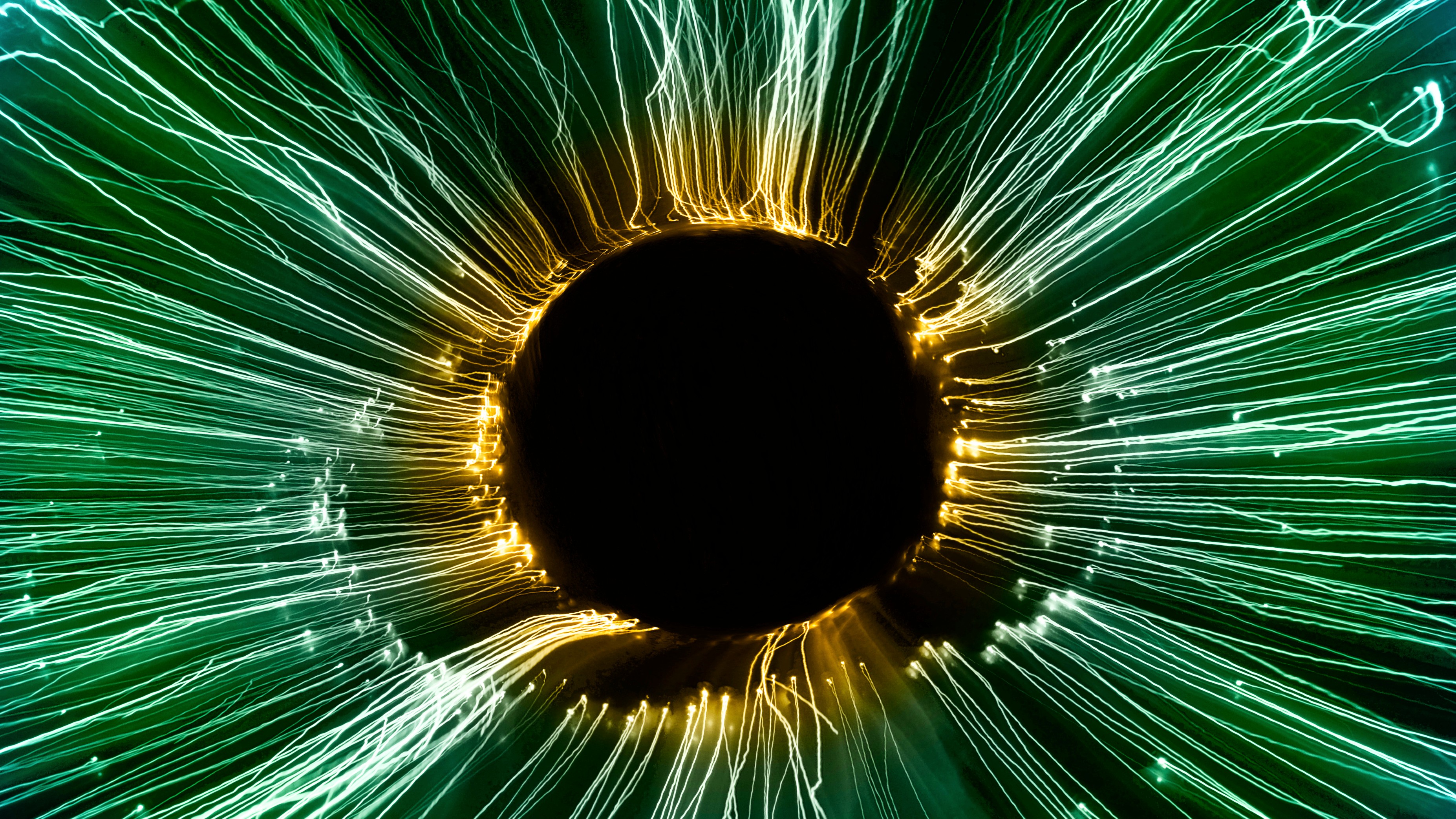The biggest hopes for what a new particle at the LHC might reveal
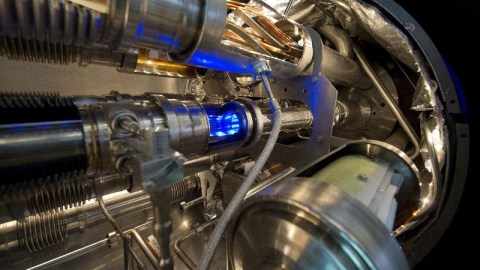
The tiniest hints are enough to spark big dreams.
“I’m a fan of supersymmetry, largely because it seems to be the only route by which gravity can be brought into the scheme. It’s probably not even enough, but it’s a way forward to get gravity involved. If you have supersymmetry, then there are more of these particles. That would be my favourite outcome.” –Peter Higgs
Built over an 11-year period from 1998 to 2008, the Large Hadron Collider was designed with one goal in mind: to create the greatest numbers of the highest-energy collisions ever, in the hopes of finding new fundamental particles and of revealing new secrets of nature. Over a three year period from 2010 to 2013, the LHC collided protons together at energies nearly four times the previous record, with an upgrade nearly doubling that in 2015: to a record 13 TeV, or approximately 14,000 times the energy inherent to a proton via Einstein’s E = mc^2. The largest, most advanced detectors of all — CMS and ATLAS — were built around the main two collision points, collecting as precise and accurate data about all the debris that emerges each time two protons smash together. July 2012 was a watershed moment for particle physics, as enough high-energy collisions were reconstructed to definitively announce, in both detectors, the first concrete, direct evidence for the Higgs Boson: the last undiscovered particle in the Standard Model of particle physics.
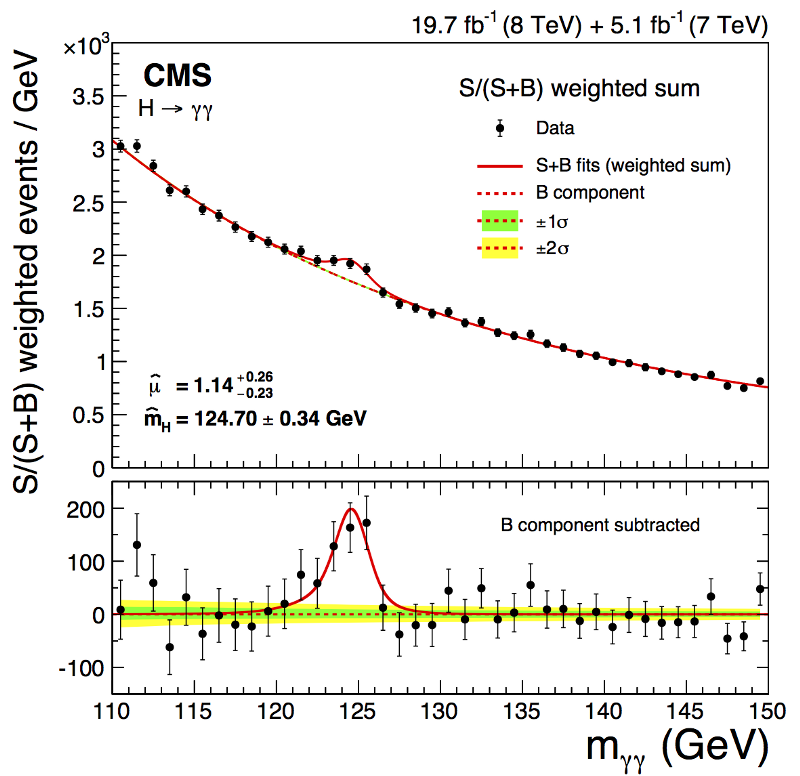
But that was expected. The problem is, there are a whole host of questions about the Universe that the Standard Model of particle physics doesn’tanswer at a fundamental level, including:
- Why is there more matter than antimatter in the Universe?
- What is dark matter, and what particle(s) beyond the Standard Model (which cannot account for it) explains it?
- Why does our Universe have dark energy, and what is its nature?
- Why don’t the strong interactions in the Standard Model exhibit CP-violation in the strong decays?
- Why do neutrinos have such small but non-zero masses compared to all the other particles?
- And why do the Standard Model particles have the properties and masses that they do, and not any others?
And the great hope of the LHC, the real hope, is that we’ll learn something extra, beyond the Standard Model, that helps answer one or more of these questions.
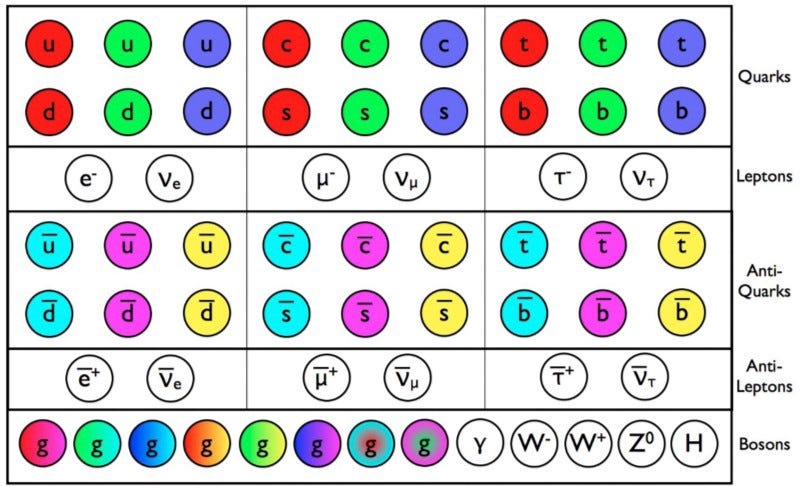
With the possible exception of dark energy, all of these problems pretty much require new fundamental particles to explain them. And many of them — the dark matter problem, the matter/antimatter problem, and the mass-of-the-particles problem (a.k.a. the Hierarchy problem) — may actually be within reach at the LHC. One way to look for this new physics is to look for deviations from the expected (and well-calculated) behavior in the decays and other properties of the known, detectable Standard Model particles. So far, to the best of our abilities, everything falls within the “normal” range, where things are perfectly consistent with the Standard Model.
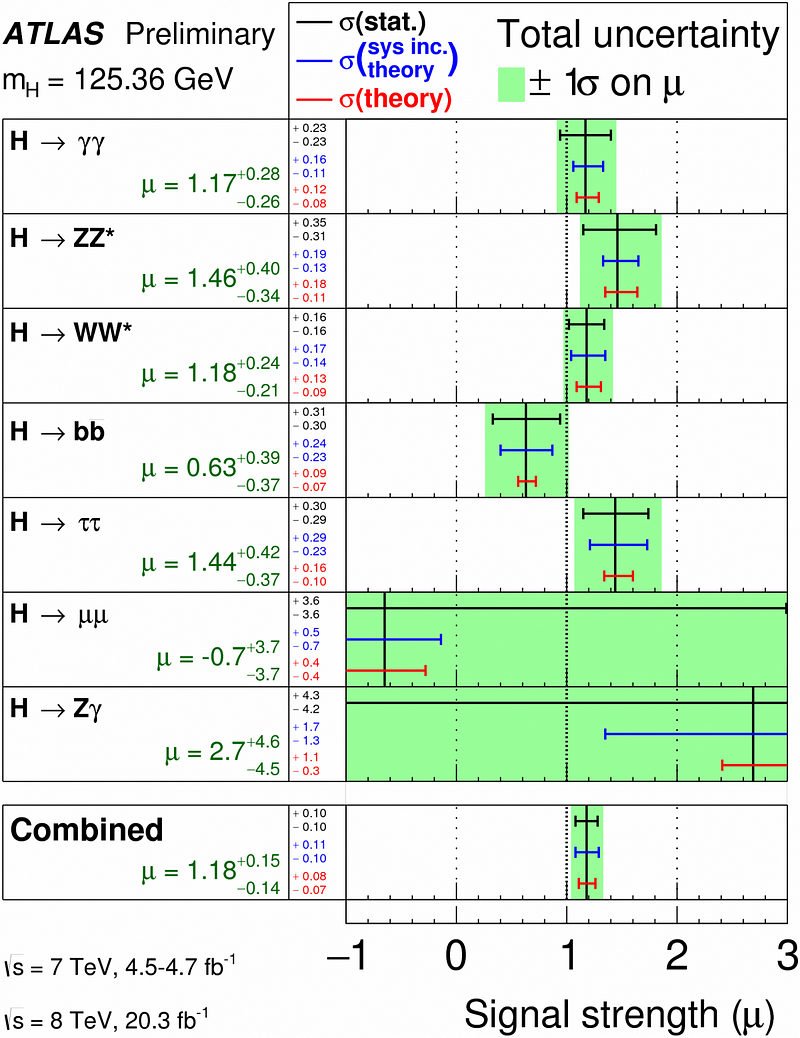
But the second way is even better: to discover, directly, evidence for a new particle beyond the Standard Model. As the LHC begins collecting even higher-energy data and with even greater numbers of collisions-per-second, it’s in the best position it’s ever going to be to find new fundamental particles; particles it never expected to find. Of course, it doesn’t exactly find particles; it finds the decay products of particles! Fortunately, because of how physics works, we can reconstruct what energy (and hence, what mass) those particles were created at, and whether we’ve got a new particle after all. At the end of the LHC’s initial run, there’s an intriguing (but not certain) hint of what might be a new particle. This “750 GeV diphoton bump” might not be real, but if it is, it could mean the world to physicists everywhere.
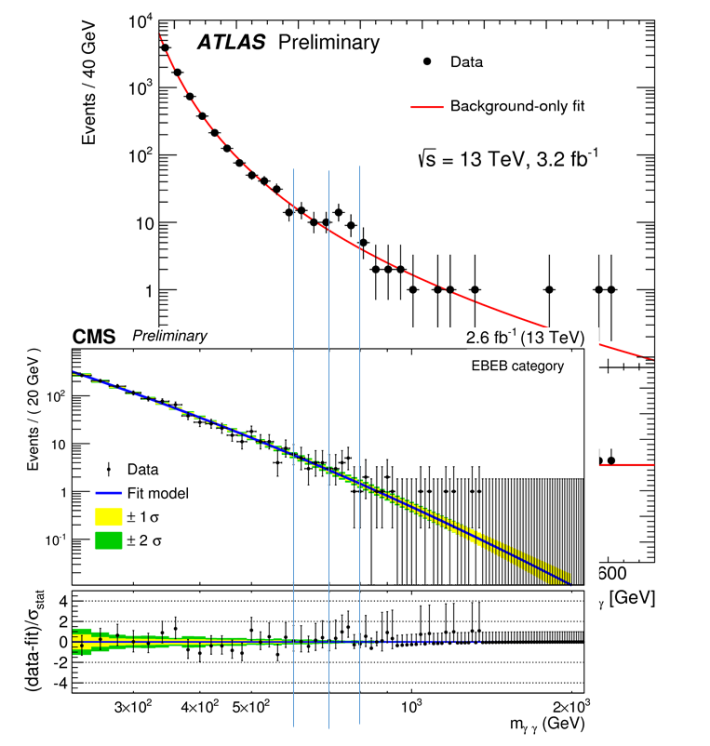
The preliminary signal is discernible in both the CMS and the ATLAS detectors so far, and that makes the possibility extra tantalizing. Within about 6 more months, we should know whether this signal is strengthening — and hence likely real — or whether it shows itself to be spurious. If it’s real, here are some of the top possibilities:
- It’s a second Higgs boson! Many extensions to the Standard Model — like supersymmetry — predict additional Higgs particles that are heavier than the current (126 GeV) one we know. If so, this could be a window into a whole world of physics beyond the Standard Model, including into the matter/antimatter asymmetry and the Hierarchy problem.
- It’s dark matter-related. Could this new particle be a window into the dark sector? Is there some energy non-conservation happening here that means we’re making something that the detectors can’t see? This is one of the “dare-to-dream” possibilities of particle physics: that the LHC could create dark matter. There’s even a fun little correlation here with something most people haven’t put together: there’s an excess in cosmic ray energies seen in this exact same energy range from the balloon-borne Advanced Thin Ionization Calorimeter (ATIC) experiment!
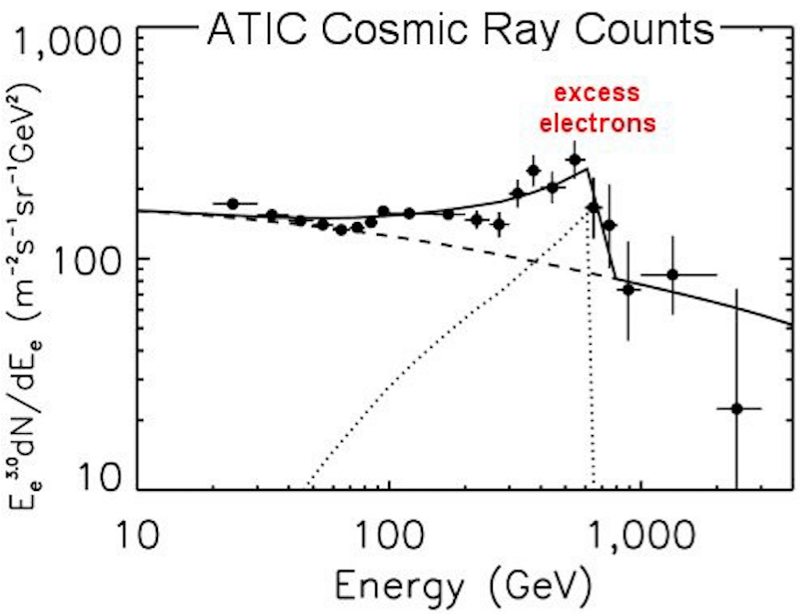
- It’s a window into extra dimensions. If there are more than the three spatial dimensions we’re used to, especially at smaller scales, new particles can arise in our three dimensions as a result. These Kaluza-Klein particles could show up at the LHC, and might decay to two photons. Studying how they decay could tell us whether this is true.
- It’s a new part of the neutrino sector. This would be a little unusual — since neutrinos don’t normally decay to two photons; they’ve got the wrong spin — but a scalar neutrino could create two photons, which is actually a thing in Standard Model extensions. The couplings and decay pathways, if it’s real, could show us this.
- It’s a composite particle. The first particle we ever saw decay into two photons was the lightest quark-antiquark combination of all: the neutral pion. Perhaps these Standard Model particles are combining in ways we don’t yet understand, and what we’ve found is nothing new.
- Or, most excitingly, none of the above. The most exciting discoveries are the ones you never anticipated, and perhaps it isn’t any of the speculative scenarios we know to look for. Perhaps nature is more surprising than even our wildest theoretical dreams.
The answers, believe it or not, are locked inside of the smallest particles in nature. All we need are the highest energies we can get to in order to find out.
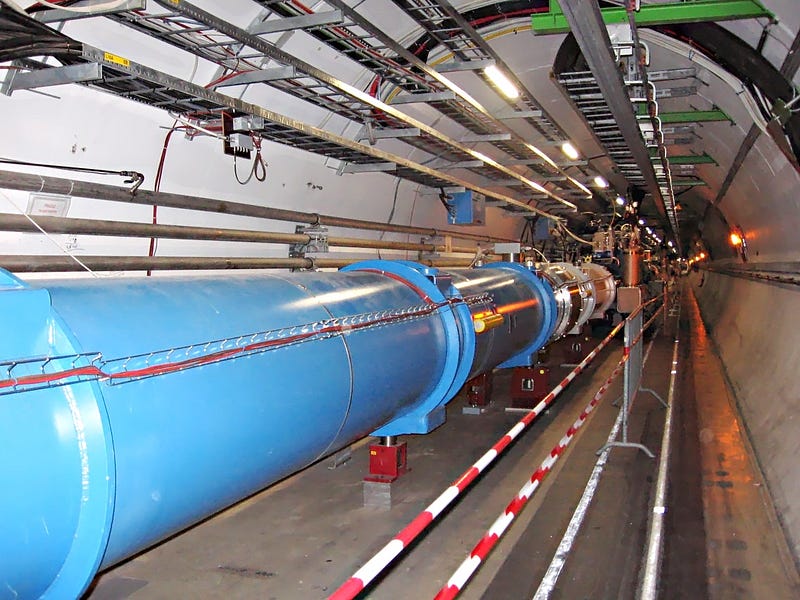
Of course, this could simply turn out to be a statistically insignificant bump that goes away with more data; it may be nothing at all. This has already happened once before, at about three times the energy. There was hint of an extra “bump” at just over 2 TeV in both detectors, as you can see for yourself.
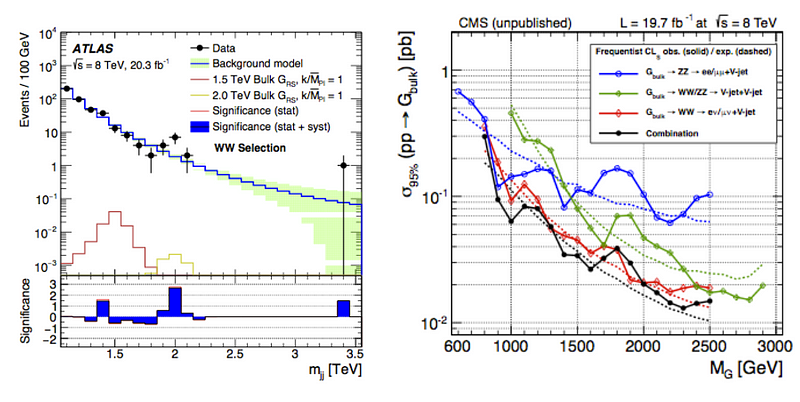
A reanalysis of the data shows there’s no significance to this signal, and that might be what we have in the 750 GeV case, too. But the possibility that it’s real is too big to ignore, and the data will come in to tell us by the end of this year. The biggest unanswered, fundamental questions in theoretical physics will get a run for the money, and all it takes is for a bump in the data to hold up a little bit longer.
This post first appeared at Forbes, and is brought to you ad-free by our Patreon supporters. Comment on our forum, & buy our first book: Beyond The Galaxy!




